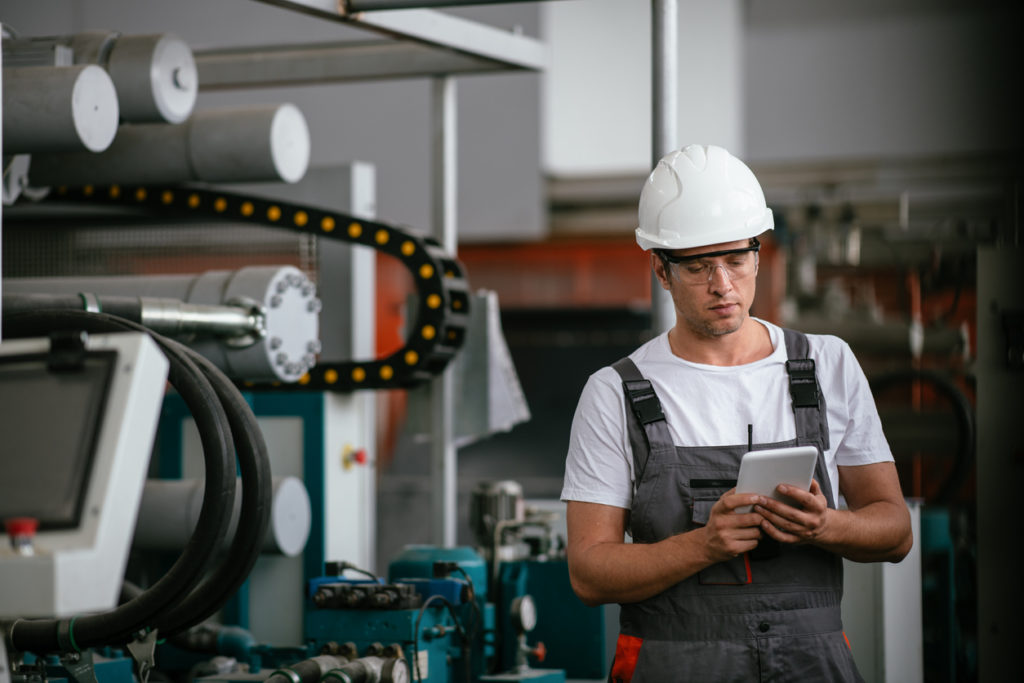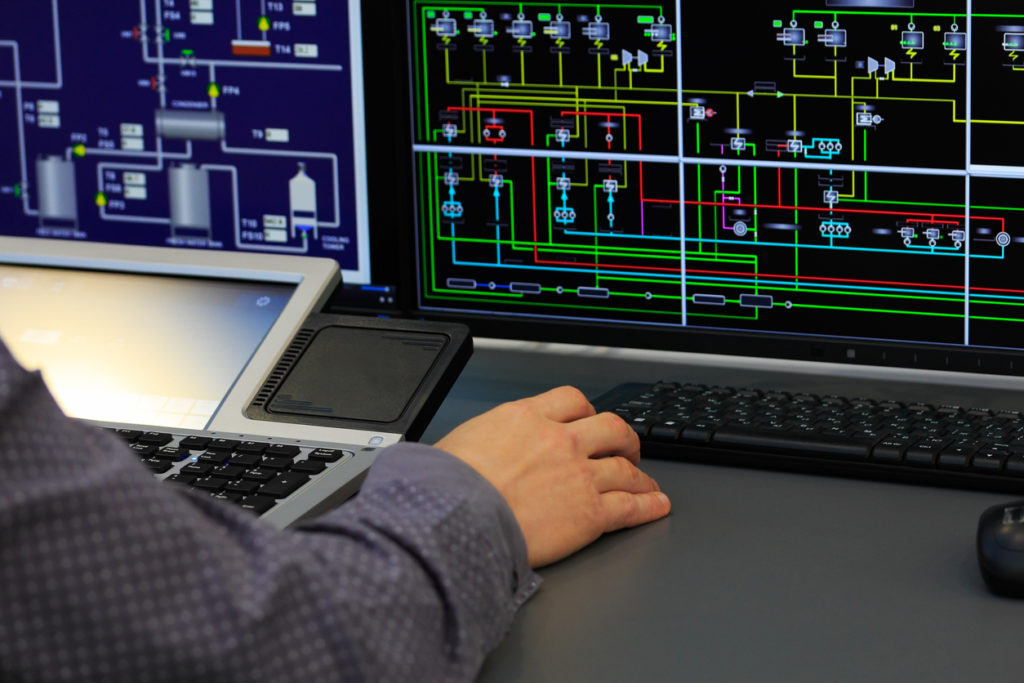In the modern world, machine monitoring systems are common in various industries and are an essential technology to help operators gain valuable data and information about a machine, such as health and life-cycle. With machine monitoring systems, predictive maintenance becomes a lot easier as factories can detect, analyse and solve machine issues in real-time, saving businesses time and money.
According to Statista, the global AI software market will increase by over twice the amount from 51 billion U.S dollars in 2022, to a staggering 126 billion U.S dollars by 2025.
What is a machine monitoring system?
One of the biggest inconveniences in manufacturing is machine downtime, both in terms of productivity and profitability. If one machine needs attention, it can cause a whole supply chain to stand still, costing businesses significantly in both time and money.
In plain terms, a machine monitoring system allows for continuous evaluation of a piece of equipment to learn more about its performance. This makes it easier to spot patterns in the way a factory’s machinery works and to detect any potential future problems.
Maintenance is a key part of any business. Equipment can’t last forever, and at times will need to be replaced or fixed to stay aligned with technological improvements. Of course, it’s better to be in the know when it comes to the condition of your equipment, and machine monitoring systems eliminate the need for guesswork, giving owners real-time insights on machine health and even allowing them to predict when maintenance work is necessary. This means that factories can be well-prepared for this loss of time whilst also keeping downtime to a minimum.
How does a machine monitoring system work?
For a machine monitoring system to work effectively, it needs to be a part of an interconnected ecosystem of devices and machines, often called Internet of Things (IoT). Multiple types of sensors which are connected to the internet are fitted to suitable machines in a factory. These sensors collect real-time data without disruption and communicate all data and information back to a centralised computer system. This process allows factory managers to make informed decisions to maximise efficiency and productivity. The sensors can also detect when machine fixes need to be carried out ahead of time, often called predictive maintenance.

How maintenance has evolved with AI
Historically, maintenance can be split into three categories: reactive, planned and proactive. Reactive maintenance is defined as the fixing of a machine after it’s broken down. Planned maintenance is the scheduling of periodic assessments of a piece of equipment to analyse its health to detect any issues. These assessments are executed regardless of the condition. When proactive maintenance is carried out, it involves looking over analytics and understanding a machine’s capacity. Data is used to make decisions, but it only looks at factors that could cause machine failure, and doesn’t actually monitor or report on a machine’s condition.
This is why AI has been such a successful introduction to the manufacturing industry. AI has revolutionised maintenance because it’s now possible to have insight into a machine’s condition continuously. AI also predicts when a machine will need some attention, meaning maintenance will only be carried out when necessary, keeping costs down. In addition to this, AI can determine the life-cycle of a machine, when is best to operate on repairs and also how to plan the maintenance window, to eliminate downtime as much as possible.
McKinsey & Company report that AI-based predictive maintenance can lower inspection costs by up to 25% and annual maintenance costs by 10%, as well as increasing availability by up to 20%.
The benefits of AI-based machine monitoring systems
- Less downtime
- Lower energy costs
- Higher output
- All the information at your fingertips
- Reduced production costs
- Less waste

Combining IIoT, AI and sensors in Smart Factories
The Internet of Things in a factory setting is referred to as the Industrial Internet of Things (IIoT). Without IIoT, sensors wouldn’t be able to feed information back to the user. The deployment of IIoT in factories allows for real-time data to be collected through the use of sensors and sent to a central database, called a CMMS (computerised maintenance management system). From here, the software transfers the data into easy-to-read reports which can be distributed without difficulty to whoever needs to see the machine data.
As technology advances, more and more factories are developing into smart factories. Operating as a smart factory can offer significant improvements in the entire production process, allowing factory managers to make better, more informed decisions. Smart factories use a range of technologies such as AI, IIoT, sensors and cloud computing to collect data. The data is used to monitor a variety of processes in a factory and can also be used to inform smarter decisions about machinery and even working procedures. With these technologies, a lot of work that traditionally takes a lot of time, can instead be automated, meaning actions are completed much quicker and without the need for human brain power.
Types of sensors used for machine monitoring
Which sensors are most common in smart factories?
According to Upkeep there are six main types of industrial sensors. The sensor used depends on the machine and what needs to be measured:
- Vibration sensors measure frequency of vibrations to check for irregularities and predict any issues in the future. Useful for motors, generators and turbines.
- Pressure sensors measure differences in pressure including water and air. Used on hydraulics.
- Temperature sensors check for heat energy generated by a piece of equipment. Used for many electrical appliances such as air con or refrigerators.
- Humidity sensors are similar to temperature sensors but can sense the amount of moisture in the atmosphere and in some cases even the exact amount of water in the air. Often found in HVAC (Heating, Ventilation and Air Conditioning) systems.
- Gas sensors keep track of levels of various gases, allowing for a safe environment.
- Security sensors are used on various applications such as alarms and GPS trackers and their main purpose is to keep machines safe, and prevent equipment from leaving the premises.
Festo AX
Festo Automation Experience (AX) is an IoT solution which uses artificial intelligence and machine learning to generate maximum value from the data you collect. With the solution, companies can increase productivity, lower energy costs, reduce waste and much more.
Why should you use Festo AX?
Real-time AI
Festo AX analyses data in real-time. This means that if there’s an issue, you’ll know about it straight away, without delay. Knowing this information immediately allows you to prepare for anything that might lead from it before it happens.
Run it anywhere
Whether you need to use Festo AX on edge (on the system), on premises (on the servers) or in the cloud, the solution is supported wherever you prefer.
Your data is yours
The data collected by Festo is exclusively owned by the customer, and is only used as agreed.
Flexible integration
Festo AX can be integrated into all systems as it works perfectly with Festo components, which are commonly used in various machines and systems. By using standard protocols such as MQTT, this solution can be integrated into third-party components and machines with ease.
How does Festo AX support companies?
- Predictive maintenance – machine data is transferred to Festo AX software and you’re notified immediately when anything ventures from the healthy state of the machine through anomaly detection.
- Predictive energy – Festo AX can also help with maximising energy efficiency. The software alerts you early on if a cost-relevant load limit is due to be exceeded.
- Predictive quality – Quality loss is another major issue that Festo AX can assist with. Festo AX consistently monitors complex factors that could affect the quality of the product, and then reports back to the user with suggested adjustments.
Recommended products
SPAN series Piezoresistive Pressure Sensor
The pressure value is transmitted to the connected controller and the sensor can be parameterised remotely using an IO-Link master.

Pneumatic motion – with pneumatic drives and systems from Festo
Explore various component options to fit any of your specifications from linear cylinders, guided actuators, swivel drives, mini slides and rotary drives to accessories.

Valves – controlling pneumatic motion
Valves are your go to solution for flow control of cylinders and connected systems within your industrial machinery, production line or assembly area to ensure error free operation.

Air preparation and connection technology – basis for pneumatic automation
Choose from pressure regulators, controllers and filter components to help you to stay in control and protect your compressed air from contamination for the highest performance of your pneumatic system.












